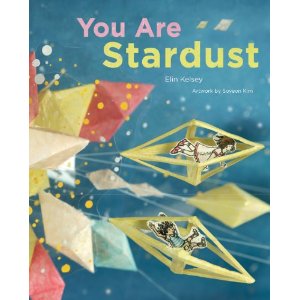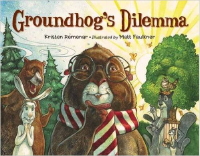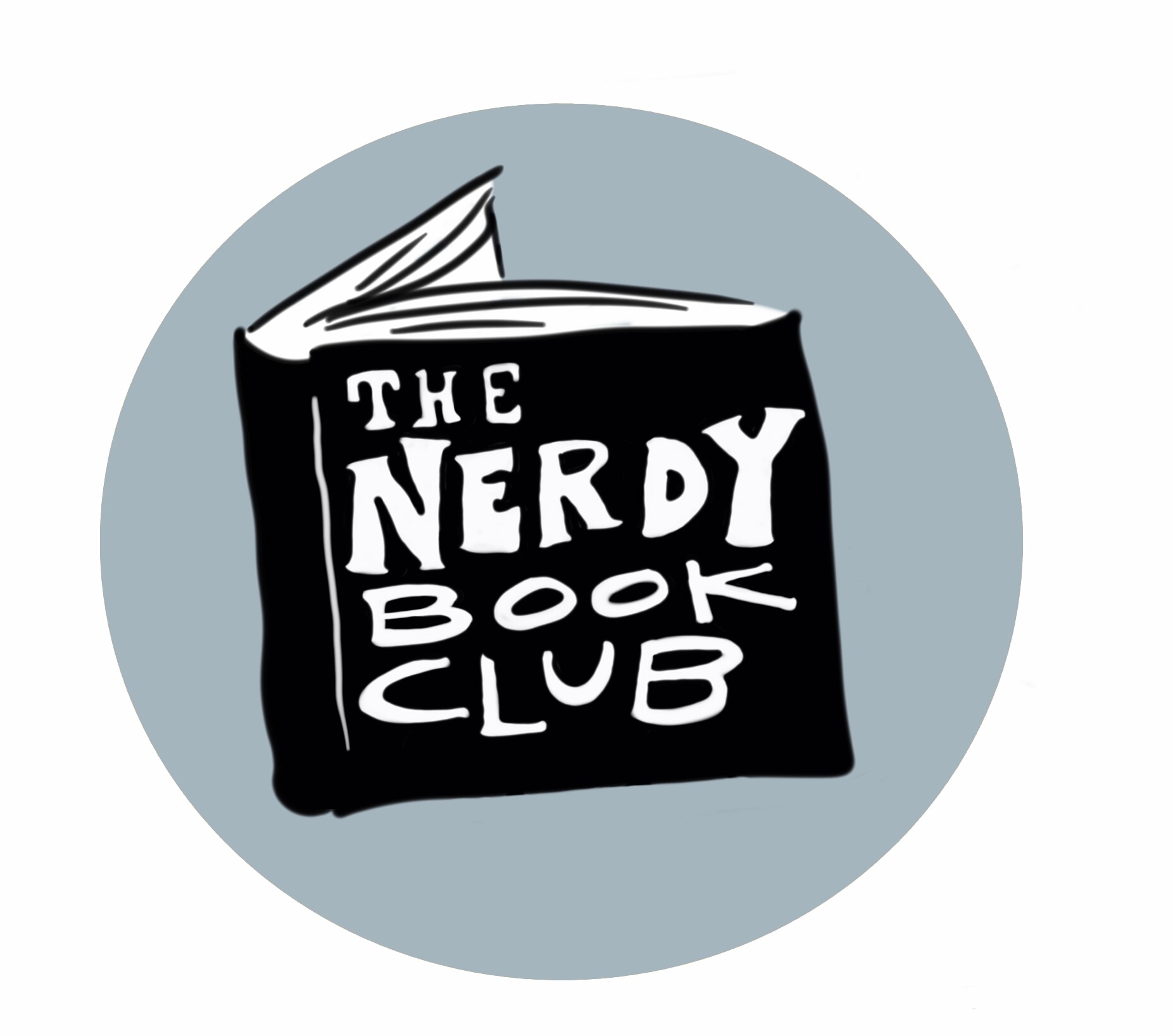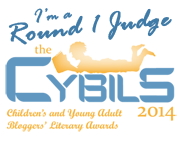You Are Stardust
Happy July! This is the month for fireworks and stargazing and wonder, which makes it the perfect month for You Are Stardust written by Elin Kelsey with artwork by Soyeon Kim. It begins like this:
“You are stardust./
Every tiny atom in your body came from a star that exploded long before you were born.”
This informational science book reads like poetry, and the facts within will astound your students:
We breathe in more than a million pollen grains with each breath.
The water we drink today is the same water that filled puddles when dinosaurs walked the Earth.
The electricity in your brain is stronger than lightning.
On owlkidsbooks.com, you’ll find a free teacher’s guide, a link to the app, a video showing second graders discussing the book’s themes, and a video that I found fascinating on how the book was made. Soyeon Kim’s dioramas are awesome and will inspire your kids to get out the art supplies. Choose an incredible fact from the book or one from the world that amazes you and bring it to life with a 3-D diorama. You might even ask a friendly librarian at your local library to put your diorama on display. (I know I’d say yes!) I hope that you and your students can be awed like Elin Kelsey and Soyeon Kim were and find beauty in our connections to the natural world.
Read More“Rah, Rah, Radishes” and Go, STEM!
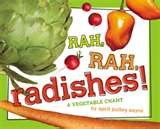 Happy May, everyone! I had the pleasure of speaking at an early education conference where our theme was literacy and science. I brought stacks of books that tie into STEM (Science, Technology, Engineering, Mathematics) or STEAM (add Art) to share. Rather than just lecture all day, I led a session of “speed-dating” books: we’d spend a few minutes skimming a book and brainstorming ways to use it with students, share our ideas with the group, and pass the book along. This way, we had time to get our hands on over a dozen books and walk away with practical classroom applications. I was so inspired by the fantastic ideas the teachers generated! Here are a few ideas we came up with after reading Rah,Rah, Radishes! A Vegetable Chant by April Pulley Sayre:
Happy May, everyone! I had the pleasure of speaking at an early education conference where our theme was literacy and science. I brought stacks of books that tie into STEM (Science, Technology, Engineering, Mathematics) or STEAM (add Art) to share. Rather than just lecture all day, I led a session of “speed-dating” books: we’d spend a few minutes skimming a book and brainstorming ways to use it with students, share our ideas with the group, and pass the book along. This way, we had time to get our hands on over a dozen books and walk away with practical classroom applications. I was so inspired by the fantastic ideas the teachers generated! Here are a few ideas we came up with after reading Rah,Rah, Radishes! A Vegetable Chant by April Pulley Sayre:
Bring in vegetables found in the book. Sort the vegetables by color and by size.
Classify and sort vegetables by the parts we eat: root vegetables, leaves, etc. Read Tops and Bottoms by Janet Stevens as a tie-in text and talk about which vegetables would be “tops” or “bottoms” according to Hare.
Predict which vegetables will sink or float. Test predictions in a tub of water. Wash the vegetables and talk about textures.
Use the vegetables to make prints.
Compare and contrast with fruits.
Weigh and measure the vegetables. Use a vegetable as a measuring tool.
Take photos of vegetables and label them. Reread the book and have students hold up the corresponding photos.
Make a chart or a Venn diagram with the terms “raw” and “cooked”. Try some vegetables both ways and chart our preferences.
See what other vegetables besides potatoes can be delicious mashed (great for little ones to do the mashing!)
Bring in potatoes with “eyes” sprouting and bring in vegetable seeds. Compare seeds and sprouts, then plant!
Make an edible collage with vegetables.
Practice patterning skills like ABAB, etc. with bite-size veggies and eat when done.
Plan a field trip to a farmer’s market or invite a farmer to come to the classroom for more vegetable experiences.
If you’re interested in the list of science books I shared, please email me at kristenremenar AT gmail DOT com. If you like Rah, Rah, Radishes! A Vegetable Chant, be sure to check out Go, Go, Grapes! A Fruit Chant and Let’s Go Nuts! Seeds We Eat also by April Pulley Sayre. Hooray for early science!
Read MoreA Warm Winter Tail
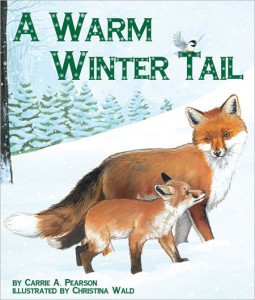 Here’s what you need this chilly January: A Warm Winter Tail by Carrie A. Pearson and illustrated by Christina Wald!
Here’s what you need this chilly January: A Warm Winter Tail by Carrie A. Pearson and illustrated by Christina Wald!
This nonfiction picture book about animal adaptations in winter is perfect for a Range of Reading lesson (Core Standard #1 – check!). Carrie Pearson, a Michigander who knows all about staying warm in winter, uses a conversational tone to share a great deal of information. On each double-spread, kids learn what an animal does to stay warm in the winter when a baby animal wonders if humans do what they do to stay warm. For example, a baby box turtle asks its parent if humans dig deep into the mud and bury themselves like it does. A white-tailed deer asks, “Do they grow hollow hair/ so the coats that they wear/ trap the heat from their bodies for warmth?” A wide variety of animals is presented, and there’s plenty of extra information at the back of the book.
On their website, the publisher, Sylvan Dell, has an avalanche of free activities to go with the book (don’t you love not needing to recreate the wheel?) In the back of A Warm Winter Tail there’s a “Winter Animal Matching Activity” where students match the description with the correct animal, and if you go to sylvandellpublishing.com you can print off the animal sorting cards to make a fun independent/pairs/center activity. (Key Ideas & Details – Core Standard #2!) I can’t wait until February when a companion book, A Cool Summer Tail, comes out. Integrating Knowledge & Ideas – Standard #3!
For more information about the author, please visit: carriepearsonbooks.com.
For more information about the illustrator, please visit: christinawald.blogspot.com.
Read MoreYou Can’t Ride a Bicycle to the Moon!
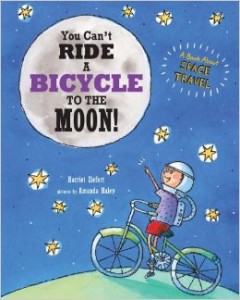 Happy 2014! My goal this year is to share more nonfiction titles with you, so your Common Core Reading Standards Bingo Board will always have Range of Reading covered! I’m enjoying the new “You Can’t” series from Blue Apple books, especially You Can’t Ride a Bicycle to the Moon! by Harriet Ziefert and illustrated by Amanda Haley.
Happy 2014! My goal this year is to share more nonfiction titles with you, so your Common Core Reading Standards Bingo Board will always have Range of Reading covered! I’m enjoying the new “You Can’t” series from Blue Apple books, especially You Can’t Ride a Bicycle to the Moon! by Harriet Ziefert and illustrated by Amanda Haley.
This picture book has short chapters and all the informational text features we educators love, including informative illustrations with labels (why hello, Integrating Knowledge and Ideas!) Your students can use the fun space facts they learn from You Can’t Ride a Bicycle to the Moon! in a creative project that incorporates using labels on a diagram or picture as a part of informative writing.
After sharing the book, discuss as a class why you can’t ride a bicycle to the moon, and discuss the features a spaceship needs to support human life. Create a class-made checklist of spaceship essentials: food storage, sleeping area, etc. Students can design, draw, and write about their ideal spaceship. (If you are extra-crafty, get out the cardboard and glue along with the paper and markers to make the spaceship 3-D!) The spaceship should have everything inside that astronauts need to live, as well as something to make your spacecraft go. Encourage students to use labels on any illustrations to convey information as well as write a paragraph or two of explanatory text.
With interesting informational books like You Can’t Ride a Bicycle to the Moon!, all your students will be superstar readers!
For more information about the You Can’t series, please visit blueapplebooks.com.
Read More




